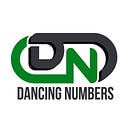Convert Sage Intacct Accounting to QuickBooks
Efficiently managing your business’s financial records is essential for accurate reporting and decision-making. If you’re currently using Sage Intacct Accounting and considering a switch to QuickBooks, you may be wondering about the process of converting your data. In this article, we’ll guide you through the steps to convert Sage Intacct Accounting data to QuickBooks seamlessly.
Introduction
Sage Intacct Accounting and QuickBooks are both reputable accounting software solutions that offer various features to manage your business’s financial records. While Sage Intacct is known for its scalability and advanced capabilities, QuickBooks stands out with its user-friendly interface and affordability. If you’ve decided to convert from Sage Intacct Accounting to QuickBooks, follow the steps outlined below to ensure a successful transition.
Benefits of Converting from Sage Intacct Accounting to QuickBooks
Before we delve into the conversion process, let’s explore some benefits of migrating from Sage Intacct Accounting to QuickBooks:
Cost-Effectiveness
QuickBooks provides cost-effective plans suitable for small and medium-sized businesses. If you find Sage Intacct Accounting’s pricing structure unsuitable for your budget, converting to QuickBooks can offer significant savings without compromising on functionality.
User-Friendly Interface
QuickBooks is renowned for its intuitive and user-friendly interface. If you or your accounting team find Sage Intacct Accounting complex or challenging to navigate, switching to QuickBooks can streamline your accounting processes and improve overall user experience.
Comprehensive Feature Set
QuickBooks offers a comprehensive set of features designed to meet the accounting needs of various businesses. From managing invoices and expenses to tracking inventory and generating financial reports, QuickBooks provides a robust feature set that can effectively support your business operations.
Preparing for the Conversion
Before initiating the conversion process, it’s crucial to adequately prepare. Follow these steps to ensure a smooth transition:
Evaluate Your Accounting Needs
Evaluate your business’s accounting requirements and compare them to the features offered by QuickBooks. Identify any specific functionalities or customizations that are crucial to your operations to ensure that QuickBooks can meet those needs.
Data Cleanup and Organization
Perform a thorough review of your data in Sage Intacct Accounting. Clean up any duplicate, incomplete, or outdated records to ensure data accuracy in QuickBooks. Organize your data in a logical and consistent manner, making it easier to migrate and work with in QuickBooks.
Backup Your Data
Before proceeding with the conversion, create a complete backup of your Sage Intacct Accounting data. This step is vital to ensure that you have a reliable backup in case any issues arise during the conversion process.
Converting from Sage Intacct Accounting to QuickBooks
Converting your data from Sage Intacct Accounting to QuickBooks involves several steps. Here’s an overview of the process:
Exporting Data from Sage Intacct Accounting
Use the export functionality in Sage Intacct Accounting to extract your data in a compatible format, such as CSV or Excel. Export critical data, including chart of accounts, customer and vendor information, transaction history, and financial reports.
Importing Data into QuickBooks
Utilize QuickBooks’ import feature to bring your exported data from Sage Intacct Accounting into QuickBooks. Follow the import wizard’s instructions, mapping the fields from the exported file to the corresponding fields in QuickBooks.
Reconciling and Verifying Data Accuracy
After importing the data, thoroughly review and reconcile the information in QuickBooks. Ensure that account balances, transaction details, and customer/vendor records match your expectations. This step helps identify any discrepancies and allows you to correct or adjust the data as needed.
Post-Conversion Tasks
Once the data conversion is complete, there are a few additional tasks to consider:
Setting Up Chart of Accounts
Review and configure the Chart of Accounts in QuickBooks to align with your business’s specific needs. Create account categories, sub-accounts, and mapping structures that match your previous setup in Sage Intacct Accounting.
Customizing Preferences and Templates
Adjust QuickBooks’ preferences and settings to match your preferred accounting workflows. Customize reports, invoices, and other templates to maintain consistency with your previous accounting practices.
User Training and Familiarization
Provide training and support to your accounting team and other relevant users to ensure they are comfortable with QuickBooks’ interface and functionality. Familiarize them with the differences between Sage Intacct Accounting and QuickBooks and highlight any new features or workflows.
Conclusion
Converting from Sage Intacct Accounting to QuickBooks requires careful planning, data preparation, and meticulous execution. By evaluating your accounting needs, cleaning up and organizing your data, and following the steps outlined in this article, you can seamlessly migrate to QuickBooks and continue managing your business’s finances efficiently.
FAQs
Q1. Can I convert all my data from Sage Intacct Accounting to QuickBooks?
Yes, you can convert critical data such as chart of accounts, customer and vendor information, transaction history, and financial reports from Sage Intacct Accounting to QuickBooks. However, certain customizations and advanced features may not be transferable.
Q2. Will there be any downtime during the conversion process?
The conversion process typically involves exporting data from Sage Intacct Accounting and importing it into QuickBooks. During this period, you may experience some downtime, especially if you need to suspend accounting operations temporarily. It’s advisable to plan the conversion during a period of low business activity.
Q3. Can I convert historical transaction data from Sage Intacct to QuickBooks?
Yes, historical transaction data can be converted from Sage Intacct Accounting to QuickBooks. Ensure that you export and import the relevant transaction details as part of the conversion process.
Q4. Will all my reports and templates transfer seamlessly to QuickBooks?
While data can be converted, certain reports and templates may require customization in QuickBooks to match your previous setup in Sage Intacct Accounting. Review and adjust your reports and templates accordingly after the conversion.
Q5. How long does the conversion process take?
The duration of the conversion process depends on various factors, such as the size and complexity of your data, the availability of resources, and the familiarity of your team with QuickBooks. It’s advisable to allocate sufficient time for planning, execution, and post-conversion tasks.
